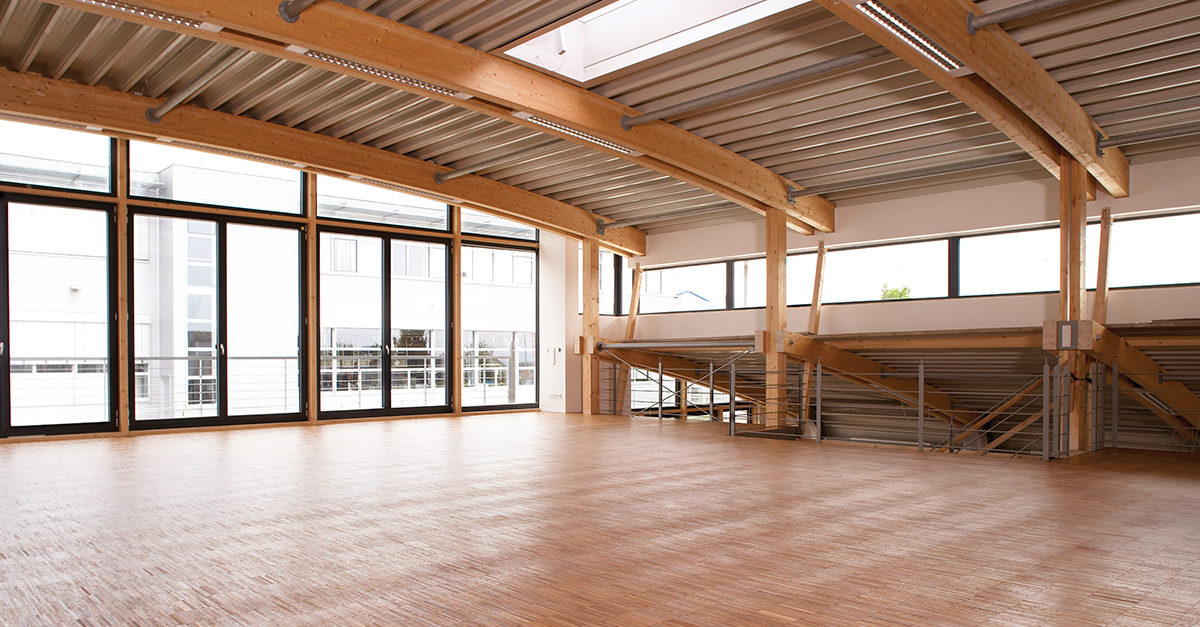With winter weather just around the corner, fall is the perfect time to prepare for cleaning and maintenance challenges the season presents. Facility managers typically use salt and ice melt products to combat snow, ice, and sleet. While these products are effective for sidewalks and streets, salt and magnesium chloride—the active ingredient in most ice melt products—are harmful and damaging to hardwood floors.
It’s no secret that dirt and debris are tough on hardwood floors. With the cooler weather comes the added element of salt, chemicals, snow, and ice tracked in to gyms, community centers, and other gathering spaces. Salt and magnesium chloride will leave a white residue on hardwood floors and can also make the floor slippery; if not removed properly they can eat away at the hardwood floor finish, damaging the floor itself. Salt also can create micro scratches in hardwood floor finish.
Here are a few tips to get your hardwood floor ready for winter:
- Dust and clean regularly. Get on a regular schedule of dust mopping, cleaning, and autoscrubbing hardwood floors. A regular cleaning routine will go a long way to keeping floors free of debris, residue, and dirt, and will also make the floors safe, particularly during snowy months.
- Build your cleaning solution arsenal. Winter cleaning supplies should consist of a professional strength, pH-neutral, and nontoxic cleaning solution formulated for regular cleaning and maintenance of hardwood floors. Some manufacturers offer a special, hardwood floor-specific winter cleaner formulated to dissolve and remove salt and other ice-melt chemicals. These specialty cleaners are a great way to augment your regular cleaning to ensure floors are clean and free of slip-and-fall hazards. Be sure to avoid all-purpose cleaners and hard surface cleaners that are too harsh for hardwood floors; these may dull the finish and leave residue behind. Finally, when using a cleaner concentrate, be sure to use the recommended dilution ratio. The wrong mix of water and cleaner may do more harm than good.
- Keep tools in shape. Anyone who has attempted to complete a job with an improperly maintained tool knows it makes the job harder, particularly during winter months. It’s important to have the right tools on hand, including a full stock of clean microfiber pads for dusting, cleaning, and autoscrubbing. Also, make sure you maintain your autoscrubber machine and equip your vacuums with new air filters to maximize efficiency.
- Use floor mats properly. Trap dirt, salt, and ice melt before it gets to the floor with ample floor mats and runners at entryways. Catching debris before it ever gets to the floor will not only save cleaning and maintenance time, but it will also prevent damage to the floor, such as scratches and ground-in dirt. Be sure to vacuum or rotate your mats often.
- When in doubt, ask. If you bump into a trouble spot, or are unsure of how to care or maintain for hardwood floors, it’s best to ask an expert. Connect with a local hardwood floor expert or your supplier to review the situation before taking action when you’re not sure.
As we enter the fall season, take a few extra moments to get your facility ready for the winter elements. Also consider the overall state of your hardwood floor. If it’s time for a refinish or recoat, now is the best time to plan a floor overhaul for spring or summer months.


